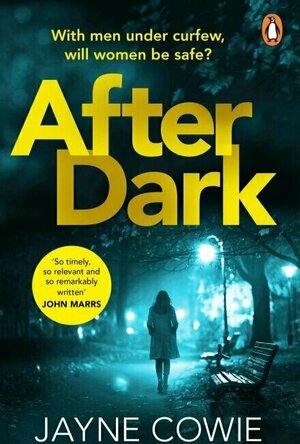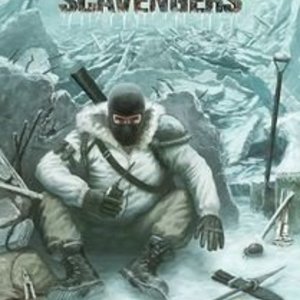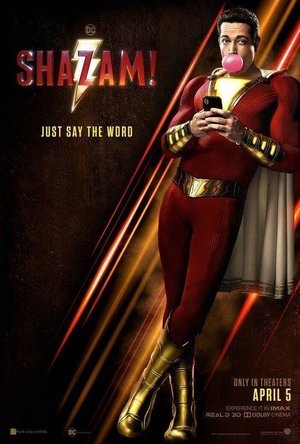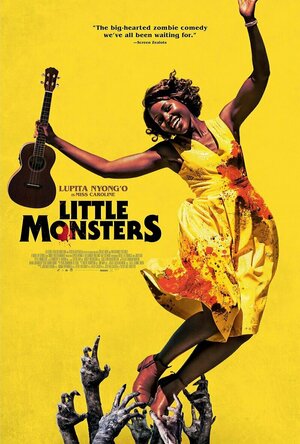
Polarsteps
Travel and Lifestyle
App
Polarsteps automatically tracks your route and places you've visited while you are traveling. Just...
Hazel (2934 KP) rated After Dark in Books
May 15, 2022
In a country that has decided that enough is enough when it comes to violence against women, a radical solution is put in place - men are electronically tagged and are not allowed outside between the hours of 7pm and 7am. Women are no longer afraid to go out at night and it appears to be 'working' when, one morning, the badly beaten body of a woman is found in a park. It couldn't have been a man ... could it?
The premise of the story is an interesting one but, for me, it didn't really deliver how I thought it would; I was hoping there would be a balanced view but it felt to me like is was very anti-male and the overwhelming thought is that all men are evil. We know that is not the case but there wasn't one male character in this book that provided another viewpoint and this was disappointing for me. I do, however, recognise that I have never been subject to male violence and therefore may have come at this from a different frame of reference and because of this, I can certainly see why some may think the future world described in this book would be utopia but, for me, I don't like tarring everyone with the same brush.
Told from different points of view and in two timelines, this book moves along at a good pace. The characters, both male and female, are not particularly likeable with the teenage daughter being the most irritating and, annoyingly, stereotypical and this caused me to not care about any of them particularly so the mystery around who was murdered wasn't that intriguing but I did like how we didn't find out until towards the end.
Overall though it was an interesting and thought-provoking read but not as good as I think it could have been but I must thank Random House UK, Cornerstone and NetGalley for allowing me to read this book and share my thoughts.
Lyndsey Gollogly (2893 KP) rated Blood and Ruin ( Book 1) in Books
May 14, 2024
Kindle
Blood and Ruin (Book 1)
By Rumer Hale
⭐️⭐️⭐️⭐️
Six years ago, my world was ripped from under me, and I was taken to Cardinal Three. A place where pain has been my endless companion.
Witches, demons, shifters and humans all live under one rule.
King's.
What he says goes.
So, trying to get the hell out of here hasn’t been easy.
No one leaves without his permission.
In fact, no one leaves at all...That is, alive.
But I have a plan.
One chance to get out of this nightmare once and for all.
One month is all I need.
One month to stay off King's radar and get the last few items needed for the spell I’ve been working on.
Shouldn’t be that hard...right?
But turns out King has his own plan. One that involves trading me off to the five shifters of Manhattan.
With King's ultimatum, I have no choice but to go through with it. But I’m still getting out of here, no matter what.
Or so I thought.
Turns out the five shifters are my mates…
And also, the boys I left behind six years ago.
Ok I’m not going to lie the first 10 chapters of this I actually kept rolling my eyes thinking it was going the same way many others in this genre go which is not a bad thing at all it’s just don’t think my mind was in the mood for it. BUT! Something said keep going and I did the last half of the book was just so good and maybe because I was a little distracted by what I thought would happen I just didn’t see it coming. Really good read in the end. I will say there are some pretty brutal things happening with the main MC so please check triggers.
graveyardgremlin (7194 KP) rated Death's Daughter (Calliope Reaper-Jones, #1) in Books
Feb 15, 2019
Ms. Benson is a capable writer, but she tends to over describe when it's really not necessary. The story matter and the whole world she created was very interesting, but throughout the book, I felt there was something missing. The main character, Callie, is okay - I didn't hate her, but I didn't love her either. I guess I'm just tiring of the same old twenty- and thirty-somethings in chick-lit-esque books that seem to pop up ad nauseum these days. I just don't understand or relate to "women" who are very ditzy, but still manage to save the day and/or end up with the guy, complain all the time, and lust after every cute guy that comes within a 50-foot radius of them. Not to mention, why are these protagonists always surrounded by pretty, perfect people that make them look even more inferior? That's not totally relatable. Maybe I'm getting older or more mature, or maybe it was just how I felt when I read it. Who knows for sure? Of all the characters, Kali was my favorite, she was pretty cool and brought some spice to the story.
Overall, the book was a fairly easy read and I do think I'll check out the second in the series to see how it progresses (and hope it shakes some of the first entry's jitters off and is more solid). I would recommend that if you're interested in reading this to get it at the library first, or else find it used.
Minor quibble: I don't know who picked the cover, but it's not how I picture Callie at all and it's rather sucky. Hopefully, the second book will improve not just in content. ;P

Sociable - Meet, Chat, Play
Social Networking and Games
App
Meet new friends and boost your games scores while you play, chat, and have fun! Sociable is a fun...
Purple Phoenix Games (2266 KP) rated Arctic Scavengers in Tabletop Games
Jun 12, 2019
Welcome to the Ice Age. No, not the animated movie. I’m talking about the real deal. Arctic Scavengers is set in a post-apocalyptic ice age where the cold is deadly and the resources are scarce. Any surviving humans have banded together to form ‘tribes’ that are competing for dominance in this frigid tundra. Can you and your tribe outwit your competitors to become the most powerful group? Or will a bigger and more menacing tribe overpower you and jeopardize your survival?
Disclaimer: The solo variant is only addressed in the Recon Expansion rules. There IS another expansion – HQ – but I have not used that content in my solo plays. This review only encompasses the Base Game and Recon Expansion.
Arctic Scavengers is a deck-building game where players are recruiting mercenaries to their tribes, searching for general resources, and battling other tribes for contested resources. Each turn has two main phases – Resource Gathering and Skirmish. During Resource Gathering, you play cards from your hand to either recruit new mercenaries or search the junkyard for general resources. Any remaining cards in your hand are then used during the Skirmish phase – where the player with the highest ‘fight’ value wins the contested resource for that round. At the end of the game, the player with the biggest tribe wins!
The solo variant has some minor differences, but is played essentially the same way. In a solo game, the contested resource cards are divided into 7 skirmishes to be encountered throughout the game. You can decide when to engage in a skirmish – it is not a requirement to encounter one each turn. After each skirmish, you either win and earn a contested resource, or lose and must permanently discard a card from your losing hand. The game ends when all 7 skirmishes have been encountered. The other difference is that each time you have to re-shuffle your discard pile, you must permanently remove the top card of your new deck from the game. Beyond those changes, the game remains the same. At the end of the game, all cards in your tribe are worth certain numbers of points – the goal is to beat your own personal best score.
In theory, this game sounds super cool! But when I actually got to play it solo, I was seriously underwhelmed. The game feels stagnant in the sense that there is no tension or urgency in your strategy. Since YOU get to decide when to engage in a skirmish, it is possible to just while away the time building up your deck until you have enough cards to beat every skirmish. Yes, you permanently discard a card each time you re-shuffle your discard pile, but if you are able to recruit one or two new cards each turn, it negates the penalty of discarding a card. The ability to choose when to engage in skirmishes is seriously over-powered because there is nothing stopping you from ignoring skirmishes and amassing cards for end-game scoring.
The other grievance I have with the game is regarding the Junkyard – the deck of cards where you ‘search’ for resources. The solo rules do not explicitly address setting up the Junkyard deck at all. So do you use one or not? Not having the Junkyard deck can be a serious hinderance – certain mercenaries cannot be recruited without certain resources. If you DO play with the Junkyard, how many cards do you use? Do you use the corresponding cards from the Base game and BOTH expansions? Only Base game and one expansion? Again, not explicitly addressed. I’ve tried using all of the Junkyard cards and that is difficult – there are just too many cards in that deck. I have gone entire games without coming across a necessary resource just because the size of the deck is too large (and I’m apparently a poor card-shuffler). The simple solution to this ambiguity would have been to just address it in the rulebook. But it’s not there, so I’m left guessing as to how I should set it up every time.
I really like the idea of this game. I really don’t like the solo variant though. Not having forced skirmishes makes the game extremely boring for me – I don’t really need a strategy since I can just recruit cards until I can draw a powerful hand. If there was a timeline for skirmishes – maybe something like “You must encounter one skirmish every other turn” – the game would be vastly different. I would actually need to strategize what cards to recruit and how I should delegate my cards on turns with a skirmish. In most games, I will reach a certain point where I choose to encounter a skirmish (that I know I will lose) just because I am starting to get bored. I appreciate the sentiment of including a solo variant, but this one just does not work.
Arctic Scavengers requires decent strategy and it offers good player interaction in group games. In a solo game, however, it is just imbalanced and boring. This is one solo variant that I would not recommend that you try, unless you are including drastic house rules.
https://purplephoenixgames.wordpress.com/2019/03/06/solo-chronicles-arctic-scavengers/
Charlie Cobra Reviews (1840 KP) rated Shazam! (2019) in Movies
Jul 7, 2020
In 1974 Upstate New York, the ancient wizard Shazam magically transports Thaddeus Sivana (Ethan Pugiotto) to the Rock of Eternity, a hidden magical temple. Shazam, the last of the Council of Seven Wizards, explains that he has been searching for centuries for a champion who is "pure of heart". Released upon the ancient world, and now trapped in statues within the Rock, the Seven Deadly Sins tempt Thaddeus with promises of power. Banished back to Earth as unworthy of being a champion for succumbing to the sins, Thaddeus causes an accident while traveling with his family which leaves his father severely injured. Searching for his birth mother in present day Philadelphia, foster kid Billy Batson (Angel Asher) runs a foul of the law and is placed in a group home with 5 other foster kids run by Victor (Cooper Andrews) and Rosa Vasquez (Marta Milans). Freddy Freeman (Jack Dylan Frazer) is one of the five foster kids, an amateur superhero expert, and his new roommate. Now an adult Thaddeus (Mark Strong) discovers how to return to the Rock and acquire the power he was denied as a child.
This movie was a ton of fun. I don't think I've laughed out loud in a comic book movie this much since Ant-Man. This movie was really good. It had its silliness in certain parts but still did well in building tension and having its serious parts. Also it was well done on how the story played on your emotions for a lot of the different characters. I love the way the foster family and siblings came into play throughout the film. The special effects were really good, especially the monsters and even though you know Zachary Levi is in a muscle suit (which i initially disliked) it didn't even matter. The plot was good although some of it seemed recycled which bothered me slightly. The dialogue was good, some of it silly, which seemed appropriate for the character being younger than he looks when he is Shazam. But I didn't have much to complain about. I never saw one of the major twists coming at the end, so that really surprised me. If you're looking for a fun movie to watch, with family or friends or a superhero movie that will also make you laugh, Shazam is the one to choose. I give this movie a 8/10.
Darren (1599 KP) rated Little Monsters (2019) in Movies
Nov 15, 2019
Story: Little Monsters starts when a washed up musician Dave (England) breaks up with his girlfriend Sara (Townsend) moving in with his sister Tess (Stewart) and her son Felix (Le Torraca), after getting his heart broken, Dave gets left on his last warning with Tess and after he meets Felix’s teacher Miss Caroline (Nyong’o) he ends up agreeing to go on a school trip.
When the trip seems to be going well, the school kids, Miss Caroline and Dave must find safety as zombies have broken free and heading to the petting zoo, joined by celebrity children’s host Teddy McGiggle (Gad) they must stay safe or face death.
Thoughts on Little Monsters
Characters – Miss Caroline is the kindergarten teacher that has the respect from all her students, treating them like nothing is going wrong no matter what is happening, she will always remain calm, with a smile on her face she takes complete control of the zombie outbreak. She has seen the father hit on her in the past which makes it easy for her to ignore them. Dave was once in a metal band, he had a girlfriend he always fought with him leading to him moving in with his sister and nephew. He is a terrible role model for Felix with his swearing, not listening and accepting it ok for a 5-year-old to play zombie games. He wants to get to know Miss Caroline and over this school trip he learns that there is more to life. Teddy McGiggle is a children’s entertainer who is world famous with every kid loving his work, when the zombies arrive, he shows the worst in mankind. The kids are all brilliant without being annoying like most would become in zombie films.
Performances – Lupita Nyong’o is wonderful to watch being a ray of sunshine through the film, bring a character that is completely different to anything we have seen before. Alexander England is excellent too, being someone, you could never see around children, getting so many laughs in the film. Josh Gad is great too, though it does seem like his character is slightly too much over the top at times. The young actors look like they are having a ball which is important for a film like this.
Story – The story here follows a teacher, a washed up musician and a group of school kids that get trapped during a zombie outbreak in a petting zoo. The best way to describe this story would be that we be, that we are focused on the human factors over the zombies, who are just background problem. We get to see how one man must learn about his life and start taking it more serious after years of wasting his time. We see zombies tackled a different way without needing to give us any sort of flashy zombie kill, which most all try to do, this is a character piece that shows positivity can give you hope no matter what is in your way. If you don’t end up smiling by the end of this film, it will be a surprise.
Comedy/Horror – The comedy is the highlight of this film, we get plenty of laughs, being part of the idea of Dave saying things or doing things around children along with how relaxing the survival attempts end up looking.
Settings – The film is mostly set on a petting zoo, which is meant to be a happy place for the children, despite it turning into a nightmare situation for the adults once the zombies come out.
Special Effects – The zombies are done with great practical effects, while any of the violence is withheld away from the camera.
Scene of the Movie – The tractor rescue.
That Moment That Annoyed Me – It seems like we didn’t need Teddy’s character if we are being completely honest.
Final Thoughts – This is a truly delightful watch, with loveable characters, adorable kids and a fresh take on the zombie genre, showing it is about the characters, not the zombies.
Overall: Enjoyable from start to finish.

Mergers, Acquisitions, and Other Restructuring Activities
Book
Mergers, Acquisitions, and Other Restructuring Activities is unique in that it is the most current,...

Cartoon Network Superstar Soccer: Goal!!! – Multiplayer Sports Game Starring Your Favorite Characters
Games and Entertainment
App
Flash Sale! Get Superstar Soccer: Goal!!! for a super low price. Become a soccer superstar with...




